As passing numbers continue to inflate across the NFL, it's becoming more and more difficult to correctly assess even basic measurements of pass production. A 65% completion rate sounds exceptional, right? Well, 18 different quarterbacks exceeded that benchmark over 10 or more starts in 2018. And as quarterbacks such as Jared Goff and Ryan Fitzpatrick seem to transform into completely different players with new coaches and in new situations, it's becoming clear that the traditional measurements fall far short in their mission to accurately and comprehensively identify the best and worst quarterbacks.
ESPN Stats & Information offers a different approach to evaluation, calculating the expected points added by every play based on its start and end state in terms of factors such as down and distance, field position and time remaining. Successful and unsuccessful plays come from the combined efforts of every player on offense and defense as well as coaches, but the EPA can be stretched to evaluate quarterbacks by comparing the EPA totals of plays in which they pass or run the ball with the EPA totals of plays without their involvement -- typically runs, defensive plays, and special-teams plays. That creates an imperfect evaluation because quarterbacks do not have full control over the success or failure of their attempts, but it does a much better job of divorcing a quarterback's responsibilities from those of his supporting cast than either basic passing statistics or won-lost records could hope to do.
By comparing the total EPA of each quarterback's attempts to that of his team's running game, defense and special teams, we have identified the top 10 and bottom 10 signal-callers in added value for 2018. Note that this is different from the most valuable quarterbacks by total value. For example, Tom Brady is seventh in QB EPA (+97.6), but he doesn't make our list because the rest of the Patriots' roster also had plenty of value by expected points added.
Read through our various categories of passers, or skip ahead to the metric of your choice here:
Most valuable | Least valuable
Most accurate | Least accurate
Most aggressive | Least aggressive
Note: We included only quarterbacks who made 10 or more starts in 2018, which excluded QBs from three teams (the 49ers, Buccaneers and Ravens).
Most valuable
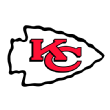
1. Patrick Mahomes, Kansas City Chiefs
QB EPA: +219.4 (1st)
Team EPA: -74.4 (20th)
QB-added value: +293.4
There wasn't much mystery to which player would land at No. 1. You'd be hard-pressed to come up with any measurement of player value that didn't have Patrick Mahomes at the top of its list in 2018. He was one of just two quarterbacks with 5,000 passing yards and the only one with 50 passing touchdowns. Those season totals would have propelled him to his standing however he accumulated them, but he epitomized the added-value concept by having his best production in the Chiefs' four losses, in which he averaged 337 passing yards, 3.75 passing touchdowns and a 111.8 quarterback rating. When the team lost, it clearly did so despite Mahomes' brilliance. And the Chiefs would have lost many more games without him, thanks to the league's seventh-worst defense by DVOA.

2. Matt Ryan, Atlanta Falcons
QB EPA: +123.5 (4th)
Team EPA: -131.9 (28th)
QB-added value: +255.4
Things become much more intriguing in second place, where Ryan takes the nod despite leading a Falcons team to a 7-9 record. His placement illustrates the importance of a relative value ranking. The Falcons were already a bottom-third defense in 2017 that got much worse last season after quickly losing their two best defensive players -- Deion Jones and Keanu Neal -- to foot and knee injuries, respectively, that put them on injured reserve. Without them, the Falcons' defense fell to second worst in football. Meanwhile, Ryan's offense quickly lost one of its best players, with running back Devonta Freeman landing on injured reserve in early October. All the Falcons could do was lean on Ryan, and with defenses imbalanced to stop his passing game, Ryan quietly put up a season with a 69.4% completion rate, 4,924 passing yards and a 5-1 ratio in touchdowns (35) to interceptions (7) that was nearly identical to his production from his 2016 MVP season. Ryan carried a team that otherwise would have competed for the No. 1 draft pick to a respectable finish, and he deserves his silver medal in these rankings.

3. Ben Roethlisberger, Pittsburgh Steelers
QB EPA: +128.1 (3rd)
Team EPA: -59.4 (15th)
QB-added value: +187.6
History likely would remember the Steelers' 2018 season more kindly had the team taken care of business in Week 14 at the Raiders. Turn that loss into a win and keep everything else the same, and the Steelers edge out the Ravens by half a game to win the AFC North. But Roethlisberger did too much right in 2018 for one week to erase it. He outpaced even Mahomes with a career-high 5,129 passing yards, which he accumulated with an impressive 67.0% completion rate. He threw a career-best 34 touchdown passes. And he has eliminated what was his biggest flaw as a quarterback: holding on to the ball for too long and taking sacks. He has steadily improved his sack rate from close to 10% of his dropbacks at the start of his career to less than 4% each of the past three years -- his 3.4% rate in 2018 was tied with Drew Brees for second best in football. His nine wins were a commendable total following the losses of defensive centerpiece Ryan Shazier to a likely career-ending spinal injury in December 2016 and star running back Le'Veon Bell to a season-long contract holdout. In addition, Pittsburgh faced the league's fourth-hardest schedule based on opponent DVOA.
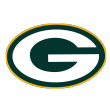
4. Aaron Rodgers, Green Bay Packers
QB EPA: +81.2 (10th)
Team EPA: -105.4 (26th)
QB-added value: +186.6
After winning at least 10 games in each of his past seven healthy seasons, Rodgers is an easy target to blame for the Packers' fall to just six wins in 2018. But his efficiency doesn't justify it. Rodgers' 0.3% interception rate was microscopic -- no other passer finished below 1%. And while he has taken criticism for throwing the ball away at a record rate, it is not fair to call him conservative. He was one of only eight quarterbacks with an average depth of throw over 9 yards. He aggressively pushed the ball downfield when he had time and had open teammates. He just frequently didn't have them, with a bottom-third offensive line in adjusted sack rate and an inexperienced group of receivers behind No. 1 wideout Davante Adams. Of course, the real reason for the dissonance in Rodgers' added value and the team's poor record was defensive injuries. The Packers lost the third-most adjusted games to injury on defense of any team, and they finished the season as the fourth-worst defense by DVOA.

5. Drew Brees, New Orleans Saints
QB EPA: +165.7 (2nd)
Team EPA: -14.8 (10th)
QB-added value: +180.4
Unlike Ryan, Roethlisberger and Rodgers, Brees had a top-10 supporting cast by EPA. It's little wonder, then, that he rattled off 13 wins in his 15 starts in 2018. Playing just a few months before his 40th birthday, Brees showed no signs of declining performance. He enjoyed career bests with 74.4% completion and 1% interception rates. He even beat MVP Mahomes with a 115.7 passer rating. His totals of 3,992 passing yards and 32 passing touchdowns fell considerably short of his peak seasons, but that simply reflects the Saints' roster depth on the offensive line, at running back and on defense. It's a great situation for him to be in, but Brees is still the catalyst for the Saints.
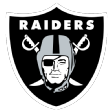
6. Derek Carr, Oakland Raiders
QB EPA: -2.2 (25th)
Team EPA: -176.2 (29th)
QB-added value: +173.9
The top five quarterbacks in added value all finished in the top 10 in EPA on their passes and carries independent of the quality of the rest of the team in 2018. Carr finished 25th. It's a real testament to how bad the rest of the Raiders' roster was that he landed so high in added value. While former teammate Khalil Mack anchored the historically great Bears defense, the Raiders' defense he left behind generated pressure on a league-low 22% of its opponents' dropbacks. Without a standout player at any level, the Raiders' defense finished third worst in DVOA. Pressure was a problem for the Raiders on offense, as well, and Carr endured 51 sacks, 20 more than in his next-worst season. And somehow, with all the problems around him, Carr set career highs with a 68.9% completion rate and 7.3 yards per attempt. His 19 touchdown passes and four wins may have underwhelmed, but Carr provided reasons for optimism that justify coach Jon Gruden's decision to keep him while he traded away the team's other incumbent stars.

7. Andy Dalton, Cincinnati Bengals
QB EPA: +32.4 (17th)
Team EPA: -119.3 (27th)
QB-added value: +151.6
It's a cliché that teams are quicker to change coaches than quarterbacks, but Dalton's No. 7 spot on this list neatly explains the reason Marvin Lewis was fired and Dalton was retained. Dalton missed all of December with a thumb injury, but his 61.9% completion rate, 7 yards per attempt and 5.8% touchdown rate were in line with his efficiencies from his 10-win seasons. Without Dalton at the end of the season, the Bengals' defensive problems were exposed, and the team won just one of its last five games. That on its own may not make Dalton's 5-6 record impressive, but it foreshadows 2019 improvements that could surprise everyone that dismissed the Bengals following A.J. Green's preseason injury. They'll certainly have an easier road to wins, improving from what was the second-hardest schedule by DVOA to the projected No. 22 schedule next season.

8. Eli Manning, New York Giants
QB EPA: +51.9 (14th)
Team EPA: -96.0 (24th)
QB-added value: +147.9
Football watchers outside of the greater New York City area were ready for the Giants to draft a new franchise quarterback a year or two before they did. But while it didn't show up in the team's won-lost record, Manning played reasonably well in 2018, completing a career high 66% of his passes and throwing for 7.5 yards per attempt, his best rate since 2011 when the team won the Super Bowl. Rookie running back Saquon Barkley was immediately one of the best backs in the league and added some badly needed offensive balance, but Manning still faced an unrealistic challenge to drag a bottom-10 DVOA defense into playoff contention. Matt Ryan and Aaron Rodgers couldn't accomplish that in similar situations in Atlanta and Green Bay. In fact, Patrick Mahomes was the only quarterback who reached the playoffs with a bottom-10 defense.
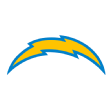
9. Philip Rivers, Los Angeles Chargers
QB EPA: +109.6 (6th)
Team EPA: -9.9 (9th)
QB-added value: +119.5
Mahomes cast a long shadow in the AFC West, and Rivers was its most-shaded figure. Rivers led a Chargers team that was missing its best defensive player in Joey Bosa for the first 2½ months to a 12-4 record, but that earned them only a second-place finish in the division, because the Chiefs never lost to another divisional opponent. Rivers finished second in the NFL to Mahomes with 8.5 yards per attempt, and he also finished in the top five in touchdown rate and quarterback rating, also behind Mahomes. At 37 years old, Rivers enjoyed one of his best career seasons. There simply wasn't anything he could do to outshine Mahomes' historically great MVP season.

10. Cam Newton, Carolina Panthers
QB EPA: +55.2 (13th)
Team EPA: -60.9 (16th)
QB-added value: +116.1
Traditional quarterback measurements have always had a difficult time capturing Newton's value, and even his career-high 67.9% completion rate was drowned out by unimpressive passing totals of 243 yards and 1.7 touchdowns per game in 2018. But EPA illustrates how Newton's unique skill set is the engine for everything the Panthers do. During Weeks 1-9, before Newton hurt his shoulder in the Steelers game in Week 10, the Panthers were the No. 2 offense, with 45.1 EPA. After his injury, they fell to No. 20, with just 10.2 EPA. Christian McCaffrey broke out and added a lot to the running game, but Newton still did much of that work himself with 488 rushing yards on 4.8 yards per carry. And the normally stout Panthers defense fell into the bottom third thanks to a sharp decline in pressure rate.
Least valuable
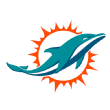
1. Josh Rosen, Miami Dolphins
QB EPA: -112.6 (29th)
Team EPA: -88.3 (23rd)
QB-added value: -24.3
2018 team: Arizona Cardinals
When Joe Flacco lost his job midseason, he lost his opportunity to defend his back-to-back finishes as the quarterback with the worst added value. But even if he had played the full season, it's unlikely he could have challenged Rosen. The rookie completed an abysmal 55.2% of his passes for 5.8 yards per attempt, 0.7 yards below Flacco and fellow rookie Josh Allen in second-worst place. And Rosen threw more interceptions (14) than touchdowns (11). Rosen had little help from a Cardinals offensive line that was bottom 10 in both adjusted line yards and adjusted sack rate -- and carried a lot of responsibility for the team's poor 3.8 yards per carry -- but the defense was decent, at 18th in DVOA. It was a tough spot for a rookie, but it's not a coincidence that the Cardinals cut bait on Rosen after one season to draft Kyler Murray with the No. 1 draft pick.

2. Kirk Cousins, Minnesota Vikings
QB EPA: +1.0 (23rd)
Team EPA: +17.1 (4th)
QB-added value: -16.1
Your snap judgment of why Cousins is ranked as the second-worst quarterback in added value might be that he is the opposite of Derek Carr, outshined by a team full of stars around him. But Cousins finished 23rd in EPA on his pass and run plays even with Adam Thielen and Stefon Diggs to throw to, and should shoulder some blame for the team's decline from 13 wins in 2017 to just eight last season. Cousins produced better passing totals -- including 4,298 yards and 30 touchdowns -- than Case Keenum did the year prior. But his efficiencies -- notably his 7.1 yards per attempt and 5% touchdown rate -- weren't dramatically better. That suggests that the Vikings' skill-position talent carried a lot of that success. Meanwhile, Cousins' exceptional 70.1% completion rate was buoyed by a 7.3-yard average depth of throw, the fourth-lowest rate at the position. He avoided mistakes because he was hyper conservative. With support from the league's No. 4 defense by DVOA that was top 10 in pressure rate and No. 1 in broken tackles prevented, a better quarterback likely could have reached the playoffs.
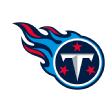
3. Marcus Mariota, Tennessee Titans
QB EPA: +14.8 (20th)
Team EPA: -2.4 (6th)
QB-added value: +17.2
Like Cousins, Mariota is another quarterback whose statistical improvements in some areas mask what actually has been consistently substandard play. Mariota set a career high with a 68.9% completion rate in 2018, but that led to the same 7.6 yards per attempt he averaged in both his freshman and sophomore seasons. The Titans invested a lot of capital to support Mariota in the running game with Derrick Henry and Dion Lewis and in a solid defense that, like the Vikings, avoided big plays thanks to broken tackles. Mariota has just been unable to lead them to 10 wins in a season. For 2018 in particular, he can reasonably point to his many injuries as an excuse, but 2019 is the last season of his rookie deal, and it might be a final chance for him to earn a big second contract with the team.

4. Mitchell Trubisky, Chicago Bears
QB EPA: +79.9 (11th)
Team EPA: +60.6 (1st)
QB-added value: +19.3
Trubisky faces a lot of the same criticism Mariota does, but he is two years into his professional career, not four, and he showed noticeable improvement from 53.6 EPA in 2017 to 79.9 EPA last season. The reason Trubisky didn't escape the bottom five in added value is that the Bears dramatically improved his surrounding talent. After adding the league's best pass-rusher in Khalil Mack, the Bears became the No. 1 defense in football and the eighth best in DVOA history (1986-present). They ended nearly a fifth of their opponents' drives with a turnover, making life much easier on their second-year quarterback. Trubisky also benefited from the league's second-easiest schedule by DVOA. It seems likely that many of the league's quarterbacks could have steered this Bears team to an NFC North title. Trubisky will have to further prove his mettle in 2019 with a tougher schedule and a defense that likely will face some regression.

5. Case Keenum, Washington Redskins
QB EPA: +2.7 (22nd)
Team EPA: -22.7 (11th)
QB-added value: +25.3
2018 team: Denver Broncos
The Broncos' defense has aged out of its previous status as the league's best, but it still finished fifth in defensive DVOA in 2018. Von Miller put up his annual double-digit sack total, and rookie lineman Bradley Chubb did the same. Meanwhile, undrafted rookie runner Phillip Lindsay produced an incredible 5.4 yards per attempt, the most for a back with at least 150 carries. Even dealing with injuries at wide receiver, Keenum has an upper-third team of surrounding talent, but he produced just modest results, with a 62.3% completion rate, 6.6 yards per attempt, and 18-15 TD-INT ratio. He was an upgrade over the 2017 season's second-worst quarterback in added value in Trevor Siemian, but barely.

6. Ryan Tannehill, Tennessee Titans
QB EPA: -43.6 (28th)
Team EPA: -70.1 (19th)
QB-added value: +26.5
2018 team: Miami Dolphins
The Dolphins have the tanking label circling their 2019 team, so it is easy to forget that their 2018 talent level was not in the league's basement. Of note, the Dolphins' defense and special teams were better by DVOA rank than their offense, and Tannehill's lack of development was likely the preeminent driving force of their failure to reach .500. Tannehill completed 64.2% of his passes for 7.2 yards per attempt, both pedestrian by modern NFL standards. He threw for just 180 yards per game, the lowest total among non-rookie starters.

7. Blake Bortles, Los Angeles Rams
QB EPA: -18.6 (26th)
Team EPA: -56.0 (14th)
QB-added value: +37.4
2018 team: Jacksonville Jaguars
Bortles bookended his deceptively mediocre "breakthrough" 2017 season with three wins as a starter in both 2016 and in 2018. His 60.3% completion rate and 13-11 TD-INT ratio from last season are more what you'd expect from a rookie than from a five-year starter. Bortles seems the likely culprit for the Jaguars' current unrest, because while they did not hold on to its top spot in defensive DVOA from 2017, they were top 10 in both defense and special teams in 2018. Nick Foles isn't the transformative player his recent won-lost record would suggest, but he still could easily lead the Jaguars to double their five wins from last season.

8. Deshaun Watson, Houston Texans
QB EPA: +69.9 (12th)
Team EPA: +17.3 (3rd)
QB-added value: +52.6
Watson is one of the most exciting quarterbacks in football and already a fantasy star, with a career 6.3% touchdown rate and prolific totals as a runner. But Watson's 12th-place EPA as a passer and runner in 2018 is likely a bit lower than your expectations because he -- and his offensive line -- sabotaged some of his successes by taking a league-leading 62 sacks. Meanwhile, Watson was supported by top-10 defense and special-teams groups by DVOA. Obviously, he outplayed Bortles, but Watson also can attribute some of his success to a good team situation.

9. Sam Darnold, New York Jets
QB EPA: -21.7 (27th)
Team EPA: -86.3 (22nd)
QB-added value: +64.6
Jets fans have an appropriate amount of optimism for the future of their team and their new franchise quarterback, but Darnold's 2018 season is only encouraging because of his age and inexperience. Compared to other quarterbacks without any context, his 57.7% completion rate and 17-15 TD-INT ratio were uninspiring. Following the Jets' major offseason spending on defense and in the running game, Darnold could follow Trubisky's lead by improving his play while also being outpaced by the improvements in his surrounding talent.

10. Carson Wentz, Philadelphia Eagles
QB EPA: +45.6 (15th)
Team EPA: -26.9 (12th)
QB-added value: +72.5
Accounting for the three teams without a 10-game starter, Wentz's 10th-worst finish in added value is not too far removed from a 10th-best finish, which is where he landed the year before. But Wentz clearly did regress from his near-MVP 2017 season, in particular in declining from a league-leading 7.5% touchdown rate in 2017 to 5.2% last season. And likely owing to his ACL injury, Wentz carried the ball 30 fewer times and for 206 fewer yards in 2018. The Eagles needed the boost from Nick Foles' 4-1 record across the start and end of the season to sneak into the playoffs as a wild-card team, and that is an underachievement for one of the most complete rosters in football.
-- Scott Spratt
Most accurate
In 2017, Drew Brees became the first quarterback to complete 72% of his passes in a season. For an encore, in 2018, he decided to become the first quarterback to complete 74% of his passes in a season. It was the fourth time Brees broke the NFL's single-season record for completion percentage. As the short passing game has become more and more popular, and offenses become better designed with every coaching change, the old benchmarks no longer work. Quarterbacks who used to complete 60% of their passes now complete 65% of their passes. The offensive era has rendered the idea of completion percentage more meaningless than it has ever been.
Football Outsiders has used game-charting data to create a stat called passing plus-minus, which estimates how many passes a quarterback completed compared to what an average quarterback would have completed based on each throw's distance, the yards needed for a first down, and which side of the field the pass was thrown to.
This is turned into a rate stat, denoted as C%+, which shows how many percentage points better than expectation the quarterback was at completing passes. Here are the 10 most accurate QBs from the 2018 season by C%+.

1. Drew Brees, New Orleans Saints
C%+: +8.5%
Some quarterbacks on this list took advantage of good accuracy against a softer selection of passes. Instead, Brees worked against a barely above-average expected completion percentage (69.9% versus 69.5%) and dominated. Brees did his best work on his deepest targets, with a 63.7% completion percentage on balls that traveled 10 or more yards. The balls he threw that deep, on average, would have yielded a 51.2% completion rate. Brees is getting older, and he faded a bit down the stretch. But he still had a monstrous season.

2. Kirk Cousins, Minnesota Vikings
C%+: +5.4%
Say what you will about John DeFilippo, and Vikings fans have, but his offense definitely took advantage of Adam Thielen's talents in the slot. Thielen had one of the busiest slot seasons ever up until DeFilippo was fired, drawing at least seven targets in every game DeFilippo coached and putting up a 76.9% catch rate. That was the main driving force of Cousins' placement on this list. Stefon Diggs wasn't too shabby, either. DeFilippo's run game wasn't quite up to the same standard, but he did some interesting things in the passing game, and Cousins delivered.

3. Russell Wilson, Seattle Seahawks
C%+: +5.1%
On the back of play-action and deep balls, Wilson's throws of 10 yards or more had an average expected completion rate of 48.8%, the lowest of any quarterback with more than 100 attempts besides Mitch Trubisky. Wilson delivered a 58.5 completion percentage on those balls, thanks in part to the historically efficient season receiver Tyler Lockett delivered. Wilson paired that with above-average short accuracy and so, even though his actual completion percentage was pretty low, he rated highly in this metric.

4. Deshaun Watson, Houston Texans
C%+: +3.7%
Watson did a majority of his damage with 10-plus-yard passes. He finished with a 61.8% completion rate on balls where the average completion rate was 52.0%. On his short passes, Watson barely completed above the average on his throws, and he suffered in yardage because the Texans broke fewer tackles than any other NFL team. DeAndre Hopkins, of course, had a wildly successful year in helping his quarterback out, even being cited by some outlets as not having dropped a pass all season. (Our charting had him with one drop.)

5. Matt Ryan, Atlanta Falcons
C%+: +3.5%
Here's our first quarterback on the accuracy side who was better on short passes. Ryan completed an above-average number of passes compared to his expected rate on deep balls, but he ranked just 10th in receiving plus-minus. Ryan's short passes created the fourth-most receiving plus-minus value in the NFL. For those worried about the shift back to Dirk Koetter as offensive coordinator, Ryan still put up a solid +1.8% C%+ last time Koetter was on staff in 2014. Ryan threw more passes to his left than any other quarterback last season and completed 73.2% of them against an expected rate of 68.3%.

6. Derek Carr, Oakland Raiders
C%+: +3.4%
Almost all of Carr's extra accuracy last season came from Jon Gruden's move to a short-focused passing game. Carr completed 81.9% of his targets under 10 yards, against an expected 78.7%. He was one of only five quarterbacks to gain more than 10 catches in receiving plus-minus on underneath throws, joining Brees, Cousins, Ryan and Ben Roethlisberger.

7. Ryan Fitzpatrick, Miami Dolphins
C%+: +3.4%
2018 team: Tampa Bay Buccaneers
And here's the opposite: Fitzpatrick gained almost all of his value last season on deeper passes. On balls that would be completed an average of 51.0% of the time, Fitzpatrick completed 61% of them. Playing with Mike Evans, O.J. Howard, DeSean Jackson and Chris Godwin had its benefits. Despite the fact that Fitzpatrick was actually less accurate than the average quarterback on his short passes, he winds up on this list. If this smells like regression is coming to you, then you and I are catching the same stench.

8. Jared Goff, Los Angeles Rams
C%+: +2.9%
Goff didn't particularly excel in deep versus short splits but had the most receiving plus-minus on throws targeting the middle of the field. His expected catch rate on passes in the middle of the field was 69.8%, and his actual completion rate was 79.4%. Coming off an embarrassing Super Bowl loss where his reads were compromised by Patriots coach Bill Belichick, Goff probably will want to work on his throws to the outside. He completed 63.3% of his throws to the right against an expected rate of 67%.

9. Carson Wentz, Philadelphia Eagles
C%+: +2.7%
Another quarterback without much of a short-to-deep split, Wentz was solidly above average at both and earned a big extension from the Eagles. His worst split last season was over the middle, where he had a 65.2% completion rate against an expected rate of 69%. That's something to watch going forward, because even in his big 2017 season that won him MVP consideration prior to injury, he still completed just 68.5% of his passes over the middle compared to an expected 65.2%.

10. Marcus Mariota, Tennessee Titans
C%+: +2.5%
Mariota was essentially league average on throws under 10 yards last season, completing 81.6% against an expected 80.4%. The deep accuracy was better, with him hitting 56.6% of his throws of 10 or more yards against a schedule that would net an average quarterback 51.6%. This despite a mostly unimpressive group of wide receivers. Mariota will need to improve his accuracy on third and fourth down -- his C%+ on those downs was only +0.9%.
Least accurate
Of the five least accurate quarterbacks in 2018, precisely one of them has a guaranteed starting job in 2019. We've seen bad rookies improve significantly before -- Jared Goff is on the list above after landing in the least accurate ranks previously. But two of last year's first-round picks are going to have to improve in a hurry, and all of them besides Baker Mayfield are in the accuracy danger zone:

1. Josh Allen, Buffalo Bills
C%+: -8.3%
When you get drafted primarily for your deep arm, but then you manage 41.6% completion rate on passes over 10 yards and attempt 137 of them, it doesn't tend to end well for the accuracy metrics. Allen showed signs of life last season, but it was mostly in his running ability. How he plays this year now that the Bills have made a big investment in his receivers and offensive line is going to go a long way toward discerning if he is an NFL starting quarterback or not.

2. Josh Rosen, Miami Dolphins
C%+: -7.2%
2018 team: Arizona Cardinals
Rosen was bad all over the field in Mike McCoy's regressive offense, but he was at his worst on short passes. On balls thrown 9 yards or shorter past the line of scrimmage, Rosen completed just 73.1% against a projected 80.1%. The move to Miami isn't going to give Rosen much more of a talent base to operate with, but the hope is probably that he can at least do better with a less 1980s offense.

3. C.J. Beathard, San Francisco 49ers
C%+: -6.7%
The Kyle Shanahan era is going to be defined by being out on an island about a few players. Jerick McKinnon comes to mind immediately. Beathard, a third-round pick out of Iowa whom no one saw going that high, has not justified the selection. His C%- in 2017 was minus-6 as well, and this is an offense in which undrafted rookie Nick Mullens could come in and light things up. Beathard might not even make it out of camp with the 49ers this year.

4. Jeff Driskel, Cincinnati Bengals
C%+: -6.0%
Driskel's biggest flaws were on first down, when he came up with a 57.1% completion rate against an expected 68.3% rate. The Bengals gave him safe throws, but his default accuracy is just so bad that it's hard for him to be a game manager backup. In other words, Driskel is what the Bills are hoping Josh Allen doesn't grow up to be.

5. Blake Bortles, Los Angeles Rams
C%+: -5.7%
2018 team: Jacksonville Jaguars
The Jaguars tried, guys, they really did. They gave Bortles expected passes over the middle with an average completion percentage of 72.9%. That's 2.5% higher than the expected completion percentage of all passes over the middle. Bortles could complete only 63.5% of them, and on a volume basis he was the worst passer in the NFL on throws over the middle. If Rams coach Sean McVay can turn Bortles around, he deserves sainthood.

6. Lamar Jackson, Baltimore Ravens
C%+: -5.5%
Jackson was probably the league's worst quarterback on throws outside the numbers last season. On 46 targets to players lined up on the outside, Jackson averaged 4.1 yards per attempt and picked up only 10 first downs and one touchdown. He was expected to complete 67.2% of those passes and completed just 54.4%. There's a lot of noise in what Jackson did solely because he played one of the most run-heavy offenses in modern NFL history. But he will need to improve that boundary accuracy to be a good NFL quarterback.

7. Sam Darnold, New York Jets
C%+: -4.7%
Darnold's biggest negative split was on throws to his right, where he was expected to complete 66% of his passes and could muster only 56.9%. In that specific category, he was every bit as bad as Rosen and Allen were last season. Of course, he was also much better in other ones, and there's plenty of reason for optimism going forward. Just don't get so caught up in the second half of the season that you miss out on how much he struggled in the first half.

8. Andy Dalton, Cincinnati Bengals
C%+: -3.1%
The biggest choker we had last season -- Dalton's completion percentage on third and fourth downs was just 48.9% against an expected completion rate of 64.5%. The good news for Dalton is that a longer sample shows he's plenty clutch on third and fourth downs. He was about average on accuracy in 2017 and completed 75.6% of third- and fourth-down balls in 2016. Now all he has to worry about is all the other reasons fans think he's not clutch.

9. Case Keenum, Washington Redskins
C%+: -2.7%
2018 team: Denver Broncos
The biggest falls from grace often happen in very short periods of time. After completing 83.9% of his passes under 10 yards in 2017, Keenum's completion rate on those same passes bottomed out to 73.8% in 2018. This is against an expected rate of 79.1%. Keenum will move on to Washington, where nothing is truly guaranteed for him. The skill position players haven't been consistent or consistently available, although Jay Gruden's offense should be an upgrade on Bill Musgrave's.

10. Joe Flacco, Denver Broncos
C%+: -1.8%
2018 team: Baltimore Ravens
Flacco completed just 61.1% of his passes to his left side, where he had an expected rate of 66.4%. Mercifully deposed in Baltimore, Flacco heads to Denver under a first-time NFL offensive coordinator (Rich Scangarello) and a defense-first head coach (Vic Fangio). There's a decent young core of receivers hanging around, but nothing established aside from the rehabbing Emmanuel Sanders. All signs point to Flacco continuing to be a bottom-tier option in terms of both accuracy and ability in 2019.
-- Rivers McCown
Most aggressive
With some of the newer NFL head coaches such as Doug Pederson having success with aggressive playcalls in high-profile situations, both analysts and fans have become eager for teams to take more chances in opposition to conventional wisdom when the expected points math suggests it is the prudent thing to do. Sadly, that has not yet happened across the league. And one place that is clearly the case is on third downs, where quarterbacks have become increasingly conservative over the past few seasons.
Football Outsiders created a metric called ALEX to measure quarterbacks' aggressiveness on third downs. Named for noted checkdown artist Alex Smith, ALEX stands for Air yards Less EXpected, and measures the average difference between a quarterback's pass depth and the yards he needs to gain on third down to create a new first down. Leaguewide, ALEX has fallen from +1.4 -- that is 1.4 yards past the line to gain -- in 2015 and 2016 to +1.2 in 2017 and +1.1 last season. But there is a new hope in the form of the 2018 league MVP. Perhaps his success with an aggressive approach to third downs will spawn the imitators that Pederson could not with his aggressive playcalling.
Patrick Mahomes heads the ALEX rankings of the 38 quarterbacks who threw at least 50 passes on third down in 2018. You would be hard-pressed to find a quarterback ranking for 2018 that didn't start with Mahomes, but I expect you'll find some unexpected names among the most and least aggressive third-down passers.

1. Patrick Mahomes, Kansas City Chiefs
2018 ALEX: +4.5
The eponymous Alex Smith went 50-26 in five seasons in Kansas City, but he was never beloved there. One reason was his lack of playoff success, but I contend the bigger reason was his conservative nature. Even in his breakout 2017 season, he peaked at +0.7 ALEX, still in the bottom half of the league. Mahomes injected Arrowhead Stadium with new life with his gunslinger approach as much as with his stellar performance. He converted 50% of his third downs, most in the league, but he also threw for a league-leading 8.8 yards on those attempts with a 12.0-yard average depth of throw. Most quarterbacks focus their third-down efforts on moving the chains, but Mahomes also wanted to score. Mahomes threw 12 third-down touchdowns, tied for second most in football with Tom Brady. Unsurprisingly, Mahomes' third-down efforts added up to a league-leading 77.6% DVOA that was the best in football. He actually performed better on third down than he did on either first (17.2%) or second down (41.5% DVOA).

2. Aaron Rodgers, Green Bay Packers
2018 ALEX: +4.5
Rodgers is no stranger to the ALEX leaderboard. He finished in the top five each of the past four seasons. His overall efficiency on third downs was typically excellent in 2018 at 22.8% DVOA, but a deeper look shows the unevenness that characterized the Packers' disappointing six-win season. Naturally, Rodgers enjoyed his greatest third-down success when he threw the ball to Davante Adams. On those attempts, Rodgers converted a new first down 70% of the time with an otherworldly 147.4% DVOA. But when he threw to his other receivers, Rodgers moved the sticks just 32% of the time and had a minus-12.2% DVOA. His lack of skill-position talent depth dragged his overall third-down completion rate to 46.6%, well below the 60% standard of the positional standouts. Rodgers also took sacks at an excessive 13.4% rate with his receivers often failing to separate. No doubt Rodgers is hoping that one of his second-year wideouts or Geronimo Allison returning from injury can provide a second option and return the team's third-down offense to its normal excellence.

3. Josh Allen, Buffalo Bills
2018 ALEX: +3.6
Allen carried himself like Mahomes or Rodgers on third down, throwing the ball 12.5 yards down the field on average. He just didn't pull it off so well. Allen finished bottom five at the position, converting 29% of his third downs into new first downs. He completed just 39.8% of those passes for 4.2 yards per attempt and one touchdown against four interceptions. Still, I think Allen deserves some praise for attempting his miracles for a Bills team that was often stuck in a third-and-long situation with 8.6 average yards to gain. The other nine ALEX leaders from 2018 finished with a positive third-down DVOA, so aggressiveness tends to be rewarded for the more experienced quarterbacks.

4. Jameis Winston, Tampa Bay Buccaneers
2018 ALEX: +3.2
Winston is another mainstay on this list, finishing in the top five of ALEX for each of the past three seasons. And while Winston has a well-earned reputation for being overly aggressive and careless with the ball, his third-down results in 2018 were unassailable. He converted 45% of his third downs, the third-highest rate in the league, and threw for eight touchdowns. Meanwhile, he threw just one of his total 14 interceptions on third down. The 6-foot-5 Mike Evans was built for those critical opportunities, and Winston relied heavily on him for nearly a quarter of his 99 third-down passes. That connection resulted in an otherworldly 179.2% DVOA and buoyed his overall third-down DVOA of 27.6%.

5. Tom Brady, New England Patriots
2018 ALEX: +2.8
From a big-picture standpoint, it's difficult to see Brady's age on the heels of another AFC East title and Super Bowl win. But age might be responsible for some of Brady's declining third-down trends. In particular, he completed just 47.1% of his third-down passes for 5.4 yards per attempt and a 7.1% DVOA. Despite enjoying 6.9 average yards to gain on third downs, a smaller total than in his previous three seasons, he converted just 36% of his third downs, his lowest rate since 2015. His aggressiveness led to a lot of big plays, including the 12 touchdown passes that tied him for second at the position with the MVP Mahomes. He just might not be the same consistent short-yardage assassin he was in his peak seasons.

6. Russell Wilson, Seattle Seahawks
2018 ALEX: +2.8
After a couple of more conservative seasons, Wilson returned to his aggressive reputation on third downs in 2018, throwing nearly 3 yards on average past the line to gain. That led to a lot of good, such as his league-leading 16 third-down touchdowns, and a bit of bad, namely his 14.6% sack rate. Wilson has always been able to rely on slot receiver Doug Baldwin as a security blanket, and even in his final season that was otherwise down from his peak years, Baldwin caught 13 of his 17 third-down targets and converted 59% into a first down. But the driving force of Wilson's increased aggressiveness was breakout receiver Tyler Lockett. Wilson targeted him more than 7 yards past the line to gain on third downs and still converted 58% of those passes into first downs. Their connection resulted in a 168.7% DVOA that was even better than Wilson's to Baldwin (131.2%).

7. Mitchell Trubisky, Chicago Bears
2018 ALEX: +2.7
On a Bears team with an exceptional supporting cast, sophomore quarterback Trubisky tended to find himself in good situations in 2018. His 6.8 average yards to gain on third downs was the lowest in football, and he easily could have stayed the same conservative player who landed him at the bottom of the ALEX trailers in his rookie season. Instead, Trubisky was confident enough to open up, flipping his minus-2.4 ALEX from 2017 to a plus-2.7 last season and increasing his conversion rate from 32% to 43%.

8. Ryan Fitzpatrick, Miami Dolphins
2018 ALEX: +1.9
2018 team: Tampa Bay Buccaneers
I don't expect that the Buccaneers signed Fitzpatrick last year because of any perceived similarities to starter Jameis Winston, but it was eerie how similar his third-down results were in 2018. Fitzpatrick threw for a top-five 7.4 yards per attempt and converted 43% of his third-down passes. Like Winston, he threw just one third-down interception. All told, Fitzpatrick produced an excellent 27.9% DVOA on third downs that was nearly identical to Winston's total of 27.6% DVOA. He just made it happen with different receiver preferences. Fitzpatrick had extreme DVOA splits of 164.9% and minus-1.8% when throwing to DeSean Jackson and Evans on third downs that were reversals of Winston's splits. It's little wonder, then, that the Buccaneers kept the Winston-Evans connection together and let both Fitzpatrick and Jackson go to new teams this offseason.

9. Baker Mayfield, Cleveland Browns
2018 ALEX: +1.8
Mayfield found a comfortable medium between the extremes of overly aggressive Allen and the other more conservative rookie passers, and he enjoyed the greatest success. He converted 37% of his third downs -- 2% behind rookie medalist Nick Mullens -- but led the freshmen passers with a 56.1% completion rate, 6.6 yards per attempt, and 25.5% DVOA on third downs. He also threw for eight touchdowns against just four interceptions and avoided sacks, leading the rookies with a 7.3% third-down sack rate. His poise in those critical situations likely made the Browns comfortable making win-now moves, such as trading for Odell Beckham Jr. this offseason.

10. Philip Rivers, Los Angeles Chargers
2018 ALEX: +1.7
Rivers has traditionally been a bit more conservative on third downs than he was in 2018, and while his 39% conversion rate was in the same small window from 39-40% that he finished in from 2015 to 2017, his aggressiveness led to some mistakes. He threw eight of his 12 total interceptions on third down. That was the most in football, and his 5.4% interception rate on third downs was second most behind only the rookie Mullens. Still, Rivers did a lot of good on third downs, throwing for nine touchdowns and taking sacks on just 5.1% of his dropbacks. All told, Rivers produced an above-average 6.4% third-down DVOA.
Least aggressive

1. Jeff Driskel, Cincinnati Bengals
2018 ALEX: -2.0
The 2016 sixth-round selection was never supposed to play for the 2018 Bengals, but Andy Dalton's thumb injury thrust him into a starting role that seemed to be too much too soon. The depleted late-season Bengals did not set him up for third-down success, leaving an average 9.4 yards to go that was the most at the position. But Driskel did not inspire any confidence that he could thrive in better circumstances. He threw for 4.3 yards per attempt, converting just 30% of his third downs and netting only one touchdown. Dalton has never been known for his aggressive play, but even he averaged 2 full yards more in the air on third downs than Driskel did. It was a short window of opportunity, but it seems to have been enough that new head coach Zac Taylor is considering moving Driskel to special teams. Perhaps he can enjoy similar success to the Saints' Taysom Hill if he can contribute less with his arm and more with his size and athleticism.

2. C.J. Beathard, San Francisco 49ers
2018 ALEX: -1.1
In terms of average pass depth, second-year quarterback Beathard was no more conservative than rookie Mullens. They finished second to last and last at the position with average depth of throws of 7.1 yards and 7.2 yards on third down. But in every other respect, Beathard fell short of his rookie teammate. He completed a position-low 39.2% of his third-down attempts and converted just 29% of them into first downs. He beat only Ryan Tannehill with both his 3.1 yards per attempt and 16.4% sack rate on third down. If their relative third-down performances are any indication, Mullens should have the advantage in their preseason battle to back up Jimmy Garoppolo in 2019.

3. Dak Prescott, Dallas Cowboys
2018 ALEX: -1.0
One of the major reasons Prescott surprised in 2016 after being a Day 3 draft pick was his willingness to be aggressive on third downs. That year, Prescott threw 1.2 yards past the line to gain on average and converted 41% of his third-down chances into first downs. But since then, Prescott has declined to +0.5 ALEX in 2017 and minus-1.0 ALEX in 2018, and his third-down conversion rate has declined in step. On a run-focused team, Prescott tends to face third downs that are more difficult than ones for a typical quarterback -- he averaged 8.3 yards to gain in 2018 -- but that was true in his rookie season, too. Perhaps the Cowboys have the defense and running game to win using Prescott as a game manager, but he has the talent to be more than that.

4. Josh Rosen, Miami Dolphins
2018 ALEX: -0.7
2018 team: Arizona Cardinals
Rosen's rookie season was a disaster, and his third-down performance was no exception. He finished bottom five at the position with a 41.2% completion rate, 3.2 yards per attempt, and a 29% third-down conversion rate. He was sacked on 13.4% of his third-down dropbacks, and while his pass protection was a major contributor to his bad play, his minus-73.4% third-down DVOA was far and away the worst at the position. Hopefully a new start in Miami will help Rosen recover from his Cardinals shell shock, and hopefully his new teammate Ryan Fitzpatrick can imbue Rosen with his same aggressive spirit.

5. Eli Manning, New York Giants
2018 ALEX: -0.5
Manning has trended more conservatively, declining from sixth at the position with plus-2.8 ALEX in 2016 to 13th at plus-1.9 ALEX in 2017 to 34th at minus-0.5 ALEX in 2018. That trajectory might fuel the narrative that Manning is past his prime, but it's difficult to argue with his results. He completed 61.0% of his third-down passes last season. Only Nick Foles, Andrew Luck and Drew Brees did better, and Manning averaged passes farther in the air on his third downs than either Luck or Brees did. Chances are Manning will continue that trend toward conservatism since departed Odell Beckham Jr. pulled Manning's third-down production up, with 1.3 ALEX and 105.4% DVOA. Manning had a minus-1.0 ALEX and a minus-0.6% DVOA to his other receivers in 2018.

6. Deshaun Watson, Houston Texans
2018 ALEX: -0.3
Watson made it through just six starts before a torn ACL prematurely ended his rookie season, and his first-year stats were so amazing and unusual that one had to assume regression would take them in many respects. That definitely happened on third downs in 2018, where Watson decreased his average depth of throw from 9.9 yards to 7.5 yards in his full second season. Pass protection likely motivated that change, as well, and Watson still took 22 sacks on third downs. But overall, Watson performed better with a more conservative approach, increasing his third-down DVOA from minus-22.5% to minus-5.5%.

7. Nick Foles, Jacksonville Jaguars
2018 ALEX: -0.3
2018 team: Philadelphia Eagles
Carson Wentz fortified his pre-injury case for MVP in 2017 with unsustainably excellent production on third down. That included an amazing 48% conversion rate and 90.3% DVOA on third downs in which he threw 3.7 yards on average past the line to gain. Regression hit him hard in 2018, but Foles was able to pick up that mantle with his own outlier performance. Foles barely hit the cutoff threshold with 53 third-down attempts, but his 75.5% completion rate on third down still seemed impossible. It was more than 10% clear of the next-best quarterback. Foles finished second behind Mahomes, with 8.1 yards per attempt and a 50.4% DVOA on third down. His 42% first-down conversion rate was really good, and he threw just one interception and took just one sack on third down. If he can perform that well for the Jaguars in 2019, he would more than justify his contract (with $50 million guaranteed). But Wentz is a prime example of how difficult that kind of season can be to repeat.

8. Jared Goff, Los Angeles Rams
2018 ALEX: -0.3
Goff's incredible second-year turnaround showed up in a lot of his statistics, and that included an ALEX that jumped from minus-2.5 in his rookie year to +0.2 in 2017. Goff maintained most of those improvements in 2018, averaging a similar minus-0.3 ALEX with another conversion rate north of 40%. Goff couldn't keep up his otherworldly 53.7% DVOA on third downs from his sophomore season, but his 7.2% DVOA was still solid. He has become the hope for players like Rosen who endure terrible rookie seasons. No other quarterback has ever turned his career around so dramatically.

9. Case Keenum, Washington Redskins
2018 ALEX: +0.1
2018 team: Denver Broncos
Keenum had a great deal of success with a conservative plus-0.4 ALEX in 2017 for the Vikings, but that same approach paid many fewer dividends in 2018 with the Broncos. His yards per attempt and conversion rate cratered on third down from 6.3 and 45% to 4.0 and 28%, respectively. Both 2018 totals were bottom five at the position. His third-down DVOA also plummeted from 26.1% in 2017 to minus-46.8% in 2018, fourth worst at the position and second worst of non-rookies. However much you attribute Keenum's outlier 2017 success to luck or to excellent surrounding talent, it seems unlikely he again will be a team's top quarterback choice entering a season.
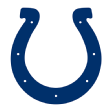
10. Andrew Luck, Indianapolis Colts
2018 ALEX: +0.1
The Colts did everything they could to keep Luck healthy and protected in his return to action in 2018. The most obvious of those efforts came in the first two rounds of the 2018 draft, when the team selected a pair of offensive linemen in Quenton Nelson and Braden Smith. But you could really see the team's change in philosophy in ALEX, where Luck declined from very aggressive totals of plus-2.5 and plus-1.5 in 2015 and 2016 to just plus-0.1 last year. That helped pull his third-down sack rate down to 2.9%, second lowest at the position. However, it also resulted in better overall efficiency. Luck completed 62.4% of his third-down passes, second best behind only Foles and best among passers with 100 or more attempts. Luck also finished top five with 7.2 yards per attempt, a 48% conversion rate, and a 32.2% DVOA on third down. No doubt that will be the Colts' game plan with Luck moving forward, especially since he is again dealing with a preseason injury.
-- Scott Spratt
